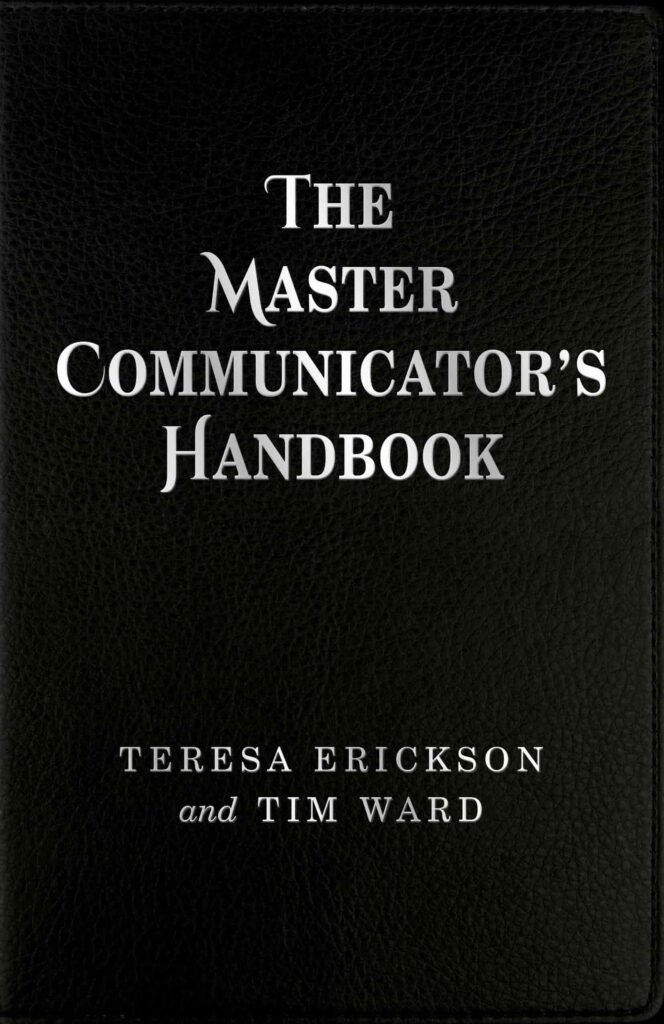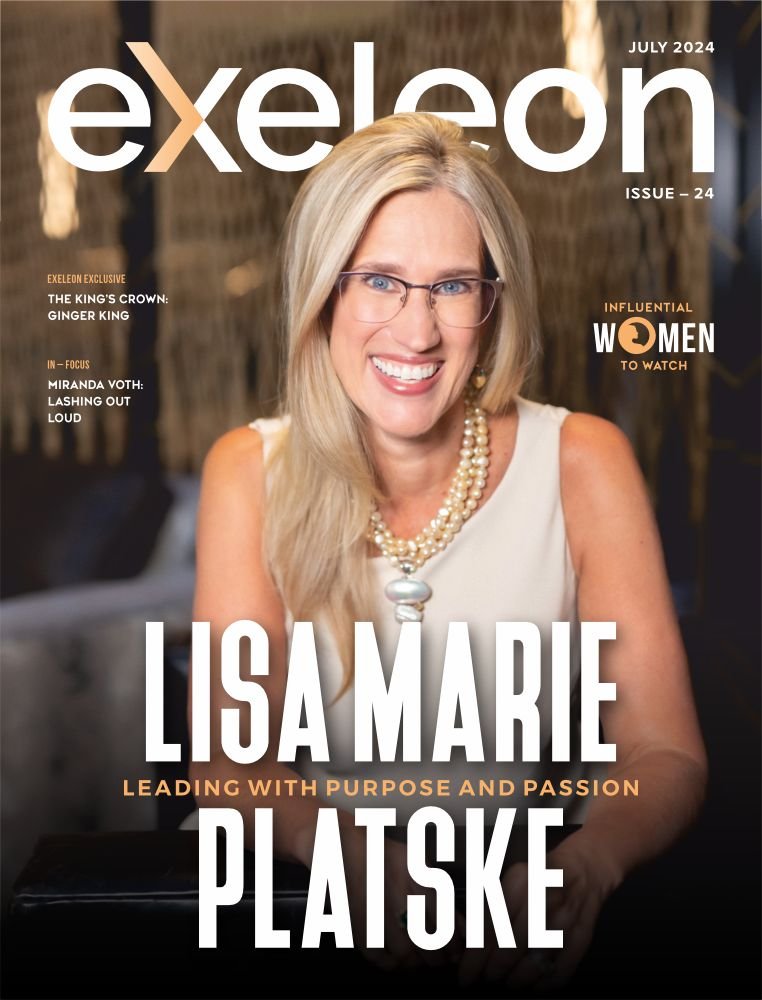This is an excerpt from the Chapter 18 of The Master Communicator’s Handbook written by Teresa Erickson and Tim Ward. Used with Permission from the Authors
To change the world, even just one corner of it, you can’t do it alone. You need a strong, collaborative network. Often, however, when we attempt to work with others to achieve a common goal we end up in power struggles, negotiations and entanglements that can sap our energy and leave us frustrated and falling far short of our ambitions.
Alignment, as we define it, offers a different path. Instead of finding a common goal to rally around, alignment depends on finding a common purpose. A goal is an external objective. A purpose is internal; it is about values and vision. Finding a common purpose transcends specific objectives and creates a bond that makes you feel part of the same tribe or team as your collaborators.
The TV show Survivor is a great example of what happens when people only have a common goal. Season after season we watch alliances form with the mutual goal of making it to the “final five” or the “final three” on the show. Yet because the ultimate goal is for an individual to win over all others, these alliances almost always break down. Somebody wants to get the jump on the rest and betrays the group.
A common goal is a means. A common purpose is an end.
Contrast the Survivor type of alliance with one of the most famous cases of alignment the world has ever known: The Battle of Thermopylae, which was made into a Hollywood film, 300. This historic event is considered one of the greatest displays of courage in the face of overwhelming odds – and its outcome decisively altered the course of history.
In 480 BC the Persian emperor Xerxes invaded Greece, determined to add it to his vast empire. A massive army, estimated at 100,000 men, marched on Athens and central Greece from the north. But to reach their goal, the Persians were forced to travel through a narrow pass at Thermopylae. For two solid days, a band of 300 Spartan warriors blocked the pass, holding at bay the entire Persian attack force. Ultimately, the Persians defeated the 300, but the fortitude of the Spartans who died at Thermopylae inspired the Greeks. Although they lost the battle and Athens fell, the Greeks refused to surrender. Later that year they won two stunning victories. Xerxes retreated, and most of the defeated Persian forces died of disease and starvation as they fled from Greece.
Had the Greeks lost heart, there would have been no golden age of Athenian democracy with all it has given to the world – elected leaders, the birth of reason, dramatic theater, trial by jury, free speech and universal public education of citizens.
To the 300 Spartans, their aligned vision of a free Greece was worth dying for. We might say alignment creates a common purpose worth living for.
When we teach alignment to our clients, we do it at the end of a six-day Master Communicators program. This is because to effectively create alignment you need to know just about every other skill in this book, including messaging, authority, rapport, framing, vision and storytelling. Here are a few additional techniques your can easily use to increase your ability to align yourself with others:

Find the Right People
Your existing network is your best resource. However, people often don’t see their network. It’s a sort of hazy web hanging in space. To concretize this web, take a large sheet of paper, draw a small circle in the center with your name in it. If there is a particular purpose you are working towards, like moving a project, program, or piece of legislation forward, write that on the top of the page. Now you can map your network: draw lines connecting you to others in your work or personal life. Next, take a colored pencil or marker and use that color to connect you with those on the alignment map who could help you achieve your goal in any way. It could be that some names on your map are bridges to other networks of influence.
The result will probably look like the sort of diagram you see in detective shows on TV – with a murder victim connected to dozens of potential suspects and witnesses. It doesn’t matter if your diagram looks messy or chaotic; creating the display so you can visualize it is what counts.
If you are focusing within your company, get hold of an organizational chart. Circle your name, and then connect it with others with whom you have a connection within the organization. You can use different colors and thicknesses of lines to indicate the strength of the connection, whether is personal or professional, etc.
Here are two lessons some of our participants learned through this exercise:
One thought leader we worked with was attempting to influence several governments across South America to forge an economic policy agreement. She needed to align with others with a similar vision: individuals who would be willing to use their influence to get the key decision makers to sign off on it. By simply diagraming her relationships she quickly realized there were three people she knew in Washington DC who could help her – and in fact, she knew one of them would be meeting with a visiting South American president the following week. But it had never occurred to her to think of asking for his support on this issue.
Another example was a woman we worked with who was in charge of strategic communications within her organization. She wanted to map the relationships between her unit and the rest of the organization. She was astonished at the result. It revealed that her team had very strong relationships with two thirds of the organization, but very few lines connecting them with the final third – and she had always wondered why this department was so unresponsive to her strategic initiatives! Here’s a simplified example of one of these maps:
There’s an additional level you can add to this if you are looking to connect with specific influencers. It’s similar to the concept of “Six Degrees of Separation.” This is the theory that we are potentially connected to everyone else on the on the planet by links of no more than six people. The “Kevin Bacon Game” best illustrates this principle. How many people would it take to connect you to Kevin Bacon? You probably know someone who knows someone who knows someone famous in Hollywood, and that person would know Kevin Bacon. That would be four degrees of separation between you and Kevin Bacon. Diagramming your relationships can help you find the best route to connecting with key people you might want to create an alignment with.
Connect around Shared Values and Vision
Here’s where rapport, vision, framing and storytelling all come into play, especially if you are reaching out to people you don’t already know. When we find someone with a common vision and values, there’s this tremendous burst of energy, like an atomic fusion reaction. It is as if we intuitively sense not only the great potential of aligning ourselves with others, but also that this use of our energy will bring us some kind of joy. You “click” with them, and that sense of “clicking” is the sound of connection. When people find a sense of common purpose, they will work long and hard together, often without any thought to financial reward.
If you are meeting someone in order to gauge the potential for alignment, it is important to listen to the stories they tell, the heroes they describe, and the metaphors they use. These reveal what philosopher of psychology Shai Tubali calls the primal narrative. These are the stories we tell ourselves about how life is, and about finding our place in the world. 1
For example, someone who uses sports metaphors and tells stories about big wins or losses in life might have a primal narrative centered around competition. If you have a similar affinity for competition, this might spur the two of you to want to join the “same team” in some common endeavor. The purpose is to see if you can find a common value. This will allow you recognize each other as belonging to the same tribe. As soon as this happens, a sense of “in group” identity gets created which becomes the basis for collaboration.
Similarly, if you are seeking to connect with others, think about what you value as ends in themselves. What stories do you tell that reveal your passion and vision? As we were mastering this concept ourselves several years ago, we realized we were not doing as good a job as we could at engaging new clients around the courses we were most excited about. So we changed our tactics. Instead of describing the content of our programs, we led with our passion for creating transformation through communications. This resulted in a remarkable shift. We found ourselves working much more with leaders who shared our passion.
When you “click” with someone around shared values and vision, you find yourselves searching for ways to collaborate. How can you do this most efficiently?
Compromise
Compromise seems negative to many people. It implies a power struggle: giving up something in order to get something. In work and personal relationships we often approach compromise like negotiators seeking to maximize our gain and minimize our loss. But when it comes to alignment, compromise means something different. It goes back to the Latin root of the word, which implies a “com” – meaning “together” – and “promise,” meaning to “send forward”. So compromise can be considered a “sending forward together, ” which is a great definition of alignment.
Mature compromise is not a power struggle. Instead, you can acknowledge that the other person has a strong and independent will. In fact, you want that other person to be as powerful as possible. You also want them to stay different from you, because that difference brings different skills and resources, and makes you more powerful when aligned. Think for example of the comic-book heroes, The Avengers. Iron Man, Thor, Black Widow – each brings their unique power to the team, which is what makes them strong.
Compromise, then, can be a way of working together that allows each of you to maximize your strength. Sometimes this means yielding to each other when there is conflict. Sometimes it means being willing to hold the tension of different views until you can find a way forward.
We often do this ourselves when we create a new course. Tim, with his background as a non-fiction author, relishes complexity. Tim prefers to design course modules that contain a comprehensive theoretical explanation so participants can understand how fascinating these ideas are, and where they come from. As a former radio host and editor, Teresa is attuned to the ease with which a listener will be able to grasp content. To her, shorter is almost always better. Information should be practical, and any theoretical content must be followed with an example of its application. We’ve learned that when we value each other’s perspective more than getting our own way, we come up with something better than either of us could have designed on our own.
One of the most amazing organizations we’ve worked with that puts alignment into practice is an NGO based in Washington named Machik.2 This is a group that works with Tibetans inside Tibet on education, environmental, and social issues across the plateau.
Once a year they bring together Chinese policy researchers from Beijing with respected Tibetan community and civic leaders for a unique discussion and exchange on the challenges of governance in Tibet. Previously these two groups never interacted. Most people are aware that these are uncertain times in Tibet. Yet the people who come together for this dialogue have forged a bond and commitment around the vision of a peaceful future for Tibet.
In sum, alignment multiplies your ability to create transformation. The truth is, most people in the world follow their own desires, and often this push and pull us in different directions, so that the overall result is not momentum towards a particular goal, but a global inertia. You could even conceive of society as like a giant hot air balloon or floating blimp. It’s vast, but motionless. However, if you blew on it from one direction with enough people and sustained force, sooner or later the balloon would respond to the pressure and begin to move in the direction you push it.
That’s the power alignment can create. It’s a force that can change the world.
About the Authors
 Tim Ward is an author, publisher, teacher, and traveler. He has written five books about his travels through Thailand, India, China, Tibet, Greece and Southern Europe, and most recently East Africa. His stories have appeared in 13 anthologies, including Traveler’s Tales Best Travel Writing 2006, 2010, 2011 and 2012. Tim is also the publisher of Changemakers Books, an imprint of John Hunt Publishing, dedicated to books on personal and global transformation. Together with John Hunt, Tim wrote The Author’s Guide to Publishing and Marketing, a book to help new authors succeed. Tim also co-owns a global training business, Intermedia Communications Training, with his wife and business partner, Teresa Erickson. They teach scientists, economists and development experts how to communicate effectively. They live in, Bethesda, Maryland, where Tim spends his spare time kayaking in the Potomac and planning his next mountain trek.
Tim Ward is an author, publisher, teacher, and traveler. He has written five books about his travels through Thailand, India, China, Tibet, Greece and Southern Europe, and most recently East Africa. His stories have appeared in 13 anthologies, including Traveler’s Tales Best Travel Writing 2006, 2010, 2011 and 2012. Tim is also the publisher of Changemakers Books, an imprint of John Hunt Publishing, dedicated to books on personal and global transformation. Together with John Hunt, Tim wrote The Author’s Guide to Publishing and Marketing, a book to help new authors succeed. Tim also co-owns a global training business, Intermedia Communications Training, with his wife and business partner, Teresa Erickson. They teach scientists, economists and development experts how to communicate effectively. They live in, Bethesda, Maryland, where Tim spends his spare time kayaking in the Potomac and planning his next mountain trek.
 Teresa Erickson is president and co-owner of Intermedia Communications Training, Inc. For the past twenty years, Teresa has designed and led communications workshops around the world. Born in Portugal, Teresa worked with the Voice of America for 17 years as a producer, editor, and host of VOA’s flagship public affairs program, broadcast worldwide to 90 million listeners a week.
Teresa Erickson is president and co-owner of Intermedia Communications Training, Inc. For the past twenty years, Teresa has designed and led communications workshops around the world. Born in Portugal, Teresa worked with the Voice of America for 17 years as a producer, editor, and host of VOA’s flagship public affairs program, broadcast worldwide to 90 million listeners a week.
About The Master Communicator’s Handbook
Buy the Book Now from Amazon – https://a.co/d/eTKKpAe









